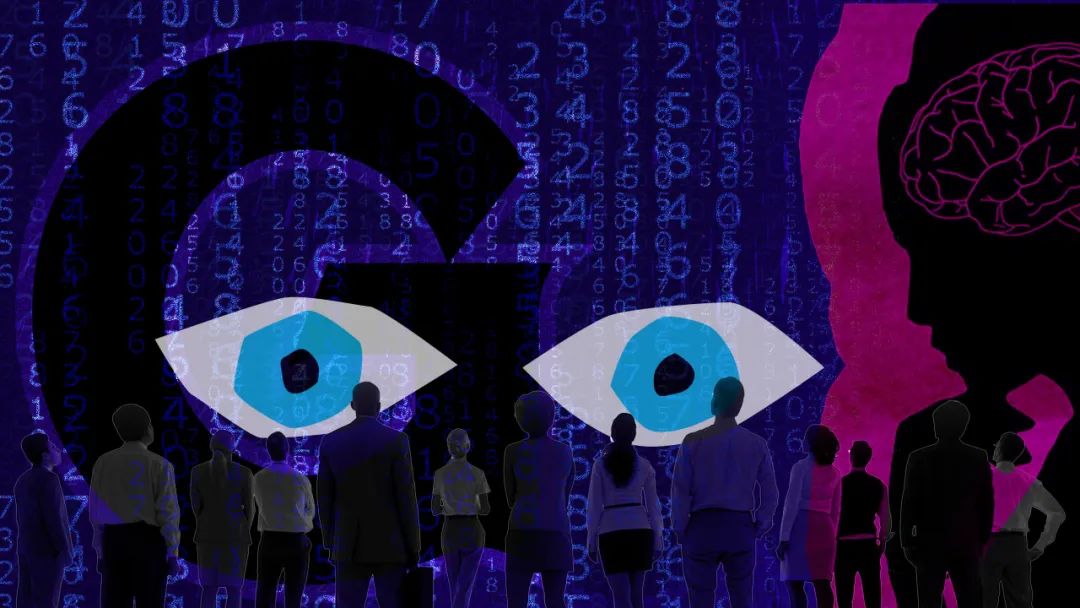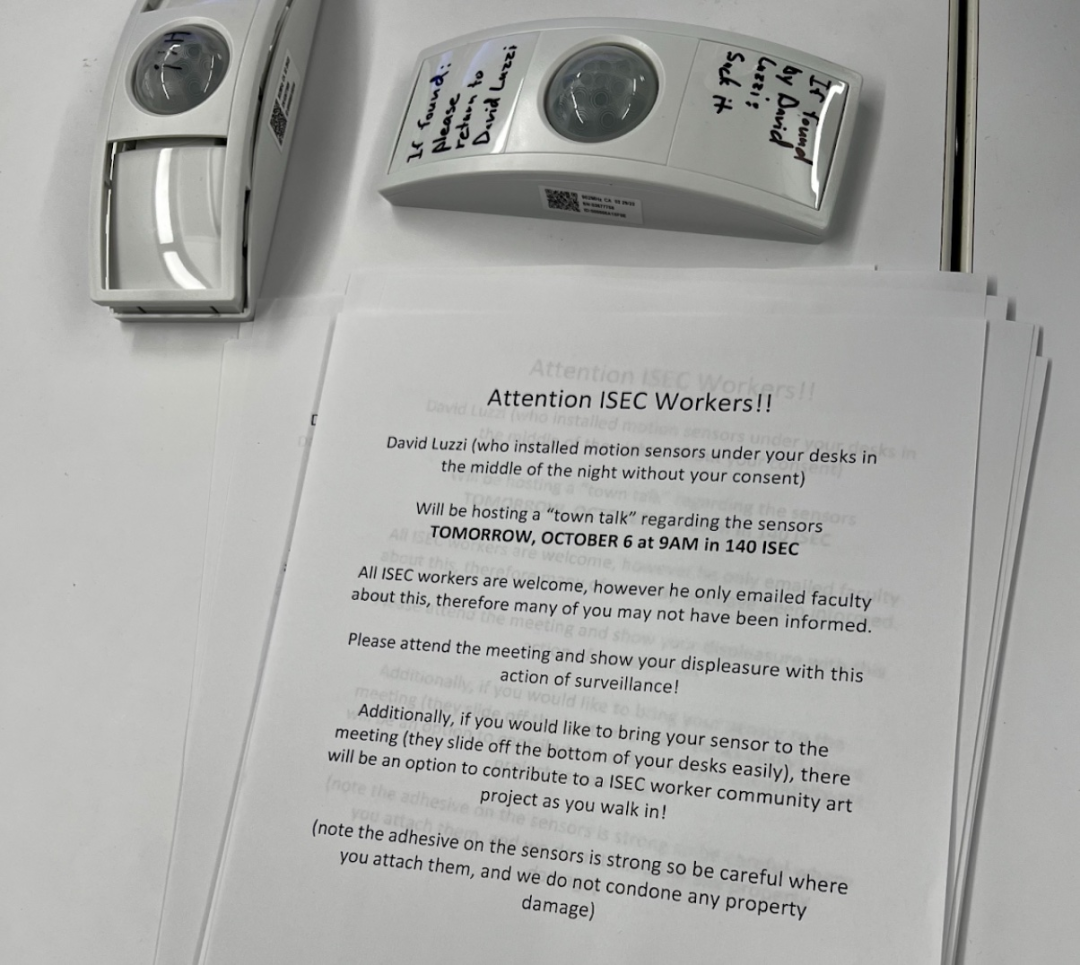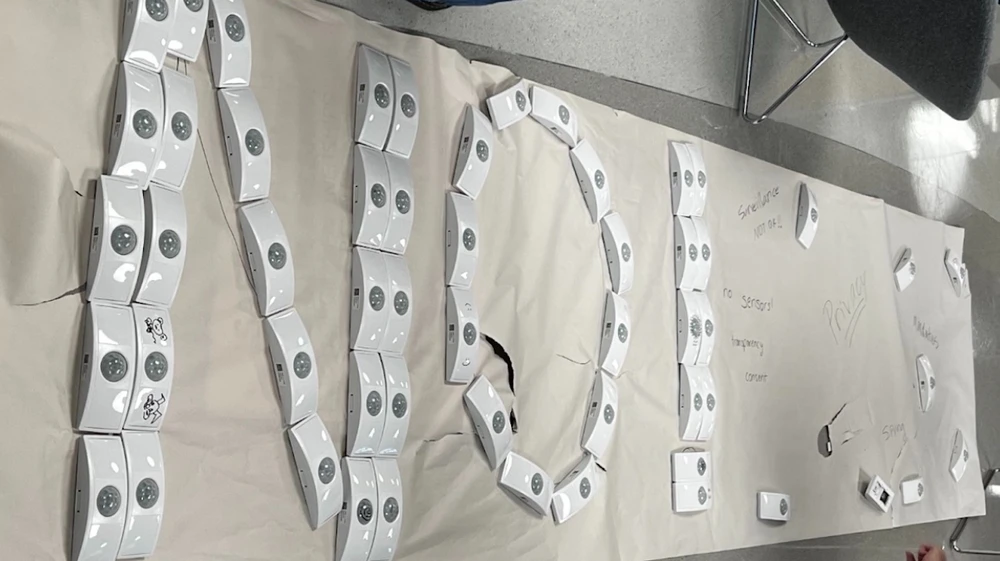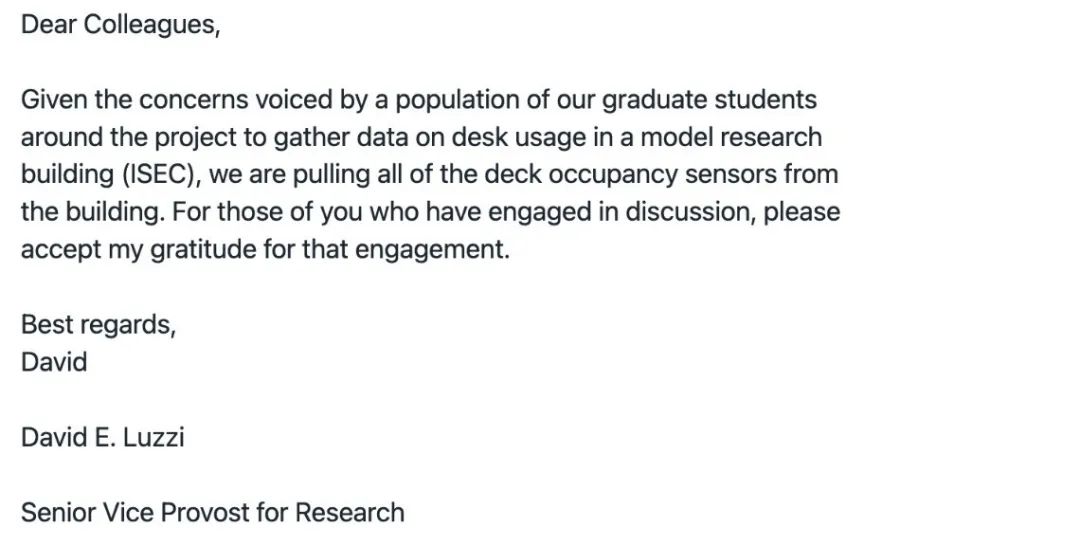
Produced by Big Data DigestAuthor: CalebOn a night in early October, a significant project was underway at the Interdisciplinary Science and Engineering Complex (ISEC) at Northeastern University in the United States.According to PhD student Max von Hippel from the Privacy Institute, sensors were being installed under all the desks in the building that night. ISEC is also home to the “Cybersecurity and Privacy Institute” which conducts research on surveillance.Since the installation was conducted at night, students were unaware of it. Von Hippel and others were only informed that it was part of a study on “desk usage”.

However, as more students became aware of the situation and found no resolution through the school, they decided to take matters into their own hands by dismantling the sensors and even writing an open-source guide.What exactly happened? Let’s take a closer look with the Digest~
Fuzzy Focus, Leadership Urges Students to “Trust the University”
In fact, similar surveillance has been increasing in universities and daily life over the past few years.ISEC at Northeastern University is a symbolic building that is “hotly contested”, so the school attempted to study desk usage to expand or optimize its use, which could be meaningful.Von Hippel stated, “During the pandemic, computer science students also rarely came to the office; aside from security considerations, writing code does not require you to be physically present in the office. If you walk around this building, you will find that most classrooms are empty; as one of the buildings promoted by the school, the administration is also quite troubled as they need to attract more students back to the classrooms.”

However, when this matter became known to the students, they expressed their concerns about the sensors and the actions taken.Senior Associate Provost David Luzzi wrote in an email that the installation of sensors “aimed to quantify the current usage of writing areas and desk allocations outside laboratories” and that the school had deployed the “Spaceti occupancy monitoring system” to detect “whether desks are occupied”.Luzzi added that this data is anonymous, and importantly, the aggregated “themes” are not focused on individual time spent at specific desks, nor are they used for evaluation or shared with student supervisors.Following this email, an impromptu listening session was held at ISEC.During the hearing, Luzzi urged graduate students to “trust the university” and insisted that it was “not a scientific experiment” to prevent students from seeking defense from the IRB.

According to Von Hippel, when Luzzi suddenly appeared, most people were still working, “We had paper deadlines and various tasks, and he did not inform us in advance,” and throughout the process, Luzzi appeared “arrogant, ignoring our questions and stating that it was productive.”He was pleased to communicate with the students to find a solution, which was absurd because the only request from the students was to dismantle the sensors, Von Hippel wrote.
From Spontaneous Attacks to University-Driven Dismantling
After that, things began to spiral out of control.Students from the Privacy Institute, who specialize in surveillance and reversing harm, began to dismantle the sensors; they attacked the sensors and created an open-source guide to allow more students to join the cause.Even though the school claimed that these devices were safe and the data was encrypted, students from the Privacy Institute learned that this was not the case. “Students, including myself, needed to delve into the shortcomings of the system before formally using it. This way, we could better explain the downsides of the devices and why they do not work.”After hacking these devices, the students wrote an open letter to Luzzi and President Joseph E. Aoun, requesting the formal dismantling of these sensors. “Deploying a tracking system under desks by researchers who frequently expose technological dangers at a university that often boasts about these researchers’ achievements is quite terrible. In the worst-case scenario, this could raise concerns about talent retention and lead to serious reputational issues for Northeastern University.”Following this, a second hearing was held, where Luzzi stated that the installation of these devices did not require IRB approval because the sensors “do not specifically sense humans — they sense any heat source.”It is conceivable that after the hearing, more sensors were dismantled by students themselves and even placed into a “public art piece” in the building’s lobby, with the words “NO!” written on it. After the situation escalated, Luzzi sent an email to arrange a third meeting.At the meeting, Luzzi was still trying to quell students’ concerns about the research, which was aggressive, poorly planned, costly, and potentially unethical. Luzzi stated that they submitted a proposal to the IRB, but when faculty revealed that the IRB had never received any proposal, he immediately admitted that this had never happened.Luzzi also attempted to attribute these concerns to the special circumstances of the Privacy Institute, as compared to other graduate students, “Your life experiences are more desk-centered.”Afterward, Von Hippel documented the entire timeline of events from the secret installation of sensors to the hearing on Twitter. A few hours later, the sensors were removed, and Luzzi wrote the final email, “In light of some graduate students’ concerns about the project to collect desk usage data within ISEC, we will remove all sensors from the building.”
After the situation escalated, Luzzi sent an email to arrange a third meeting.At the meeting, Luzzi was still trying to quell students’ concerns about the research, which was aggressive, poorly planned, costly, and potentially unethical. Luzzi stated that they submitted a proposal to the IRB, but when faculty revealed that the IRB had never received any proposal, he immediately admitted that this had never happened.Luzzi also attempted to attribute these concerns to the special circumstances of the Privacy Institute, as compared to other graduate students, “Your life experiences are more desk-centered.”Afterward, Von Hippel documented the entire timeline of events from the secret installation of sensors to the hearing on Twitter. A few hours later, the sensors were removed, and Luzzi wrote the final email, “In light of some graduate students’ concerns about the project to collect desk usage data within ISEC, we will remove all sensors from the building.”

Reflection: How to Avoid the “Shitty Technology Adoption Curve”
As surveillance becomes a default, the resistance at Northeastern University is quite significant.
In Von Hippel’s view, this success is partly due to the saturation of union members in the computer science department, and the large number of students involved were not union members; more generally, graduate students at universities are not under the official union of the National Labor Relations Board.
Nevertheless, whenever universities impose harsh conditions or unethical demands, graduate students still have the right to voice their demands.
Von Hippel stated, “The most powerful tool graduate students have is the strike. Fundamentally, universities operate on the backs of graduate students, whether teaching or assisting, the number of graduate students is staggering. If there are hundreds of undergraduates in a class, without graduate students to grade assignments, those classes cannot function at all.”
“The computer science department was able to organize quickly because almost everyone was a union member, had signed cards, and was connected through the union. Once such a situation arises, we can communicate through union channels. Members will meet, discuss the issue face-to-face, propose a set of solutions that everyone agrees upon, and then take action.”
The key is to be responsive, especially as more systems adopt sensors for false or other reasons. Currently, at Carnegie Mellon University and in public school systems, sensors are being used more frequently; at the same time, sensors can also be seen in other militarized and incarcerated environments.
These promotional activities are part of what Cory Doctorow calls the “shitty technology adoption curve”. In this curve, terrible and unethical technologies are normalized and rationalized, with officials changing various excuses to deploy them into daily life, starting with immigrants, prisoners, and the homeless, gradually extending to students, contractors, and non-unionized workers. By the time these technologies reach those who are most vocal and resistant, they have already been widely adopted.
However, there is also the human reality that not every graduate student is willing to strike, nor does every graduate student have the ability to leave a project that refuses to stop launching surveillance initiatives.
However, collective action institutions such as unions, strike funds, and communication infrastructures can indeed play a significant role in facilitating action.
Related Reports:
https://www.vice.com/en/article/m7gwy3/no-grad-students-analyze-hack-and-remove-under-desk-surveillance-devices-designed-to-track-them
https://news.techworkerscoalition.org/2022/11/29/issue-19/

 People who click “Like” become more attractive!
People who click “Like” become more attractive!